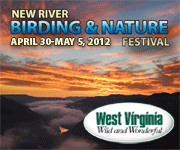I call North Bend State Park in Harrisville, WV, my happy place. I also call it Birding Valhalla. That's because there's no place else I can think of where you can see 80 red-headed woodpeckers in a single day.
They're here because the forest that was flooded to make the lake killed a lot of big trees.
And those big trees were perfect for red-headed woodpeckers to drill out for their nesting cavities.
To my amazement, we saw a bird making a cavity on July 25. Well after one would think they'd be excavating a nest cavity. Perhaps it's to be a roost cavity, even a winter roost hole. It was pecking away!
David laughed out loud to see it dip in, take bills full of sawdust and chips, and ptoo! them out into the breeze.
I was delighted to capture the moment for him. PTOO!!
All around us, red-headed woodpeckers were feeding fledged young, doing crazy loop-de-loops after dragonflies and dog day cicadas in the big spaces over the lake. It was wonderful.
There really is nothing I don't love about red-headed woodpeckers. The best woodpeckers of all.
But even as I enjoy North Bend, I know it's a limited-time offer. For the nesting snags they use, after more than a decade of standing in water, are falling into the drink. More are down every time I visit.
I was trying to shoot a poignant photo of two cavity trees in mud when this little character gave a metallic chip and bobbed into view.
It's this year's young Louisiana waterthrush, assuring me that, snags or not, there will always be something interesting going on at North Bend.
The double-crested cormorant and the great blue heron agreed as they posed against the elegiac wrecks of trees. Such riches from dead wood.
We stopped to examine the hollow bole of a sycamore, and I remembered why I love Mary Jane so much. She stuck her head in the space and sang a mysterious and compelling Native American song, her beautiful voice resonating and echoing across the quiet lake. Now, who does that? My friend Mary Jane, that's who.
Because I look down so much, gazing into the water, looking for dragonflies and fish and water plants, I often miss what's overhead. David and Mary Jane pointed out this second Science Chimp stumper. Now, how did that snakeskin get there, 12' up in a dead snag that's standing in several feet of water? Did a snake somehow climb up there to shed? Nope.
They had just found a great crested flycatcher nest. The snakeskin had been airlifted up there. Great crested flycatchers like to trail a snakeskin out of their nestholes, perhaps as a deterrent to avian predators, but maybe "chust for nice." When I was a kid, I found a GCFL nest in our woods in Richmond, Virginia, by seeing a long trailing strand of Fiberglas insulation, stolen from a house under construction, trailing from a cavity.
The snakeskin waved in the breeze in the most delightful way, and I felt lucky to have friends who can spot such things, and doubly lucky to be the one who gets to tell them how such mysterious things come to pass.
If canoeing North Bend with me sounds like something you'd like to do, there are still some spaces left in the Bird Watcher's Digest Reader Rendezvous coming up August 22-24, 2014.
Check it out here: Birding Valhalla With Julie Zickefoose
And in a lovely bit of serendipity, my pal Floridacracker has just posted a fascinating photoessay on a Florida park that's managed with fire for woodpeckers, including the endangered red-cockaded and the beloved red-headed. His post is called
A Place for Redheads. Go read it! With red-headed woodpeckers, it's all about living amongst large trees with an open understory. Whether that understory is water, as at North Bend in WV, or savannah, as at Ochlockonee, they need that kind of space between the trees because they're flycatching woodpeckers. I thought it was pretty cool that we two blogosaurs (Floridacracker started blogging in the spring of 2005, and I followed in December of that year) were groovin' on the same birds at the same time, many hundreds of miles apart.
































Tuesday, August 5, 2014
10 comments